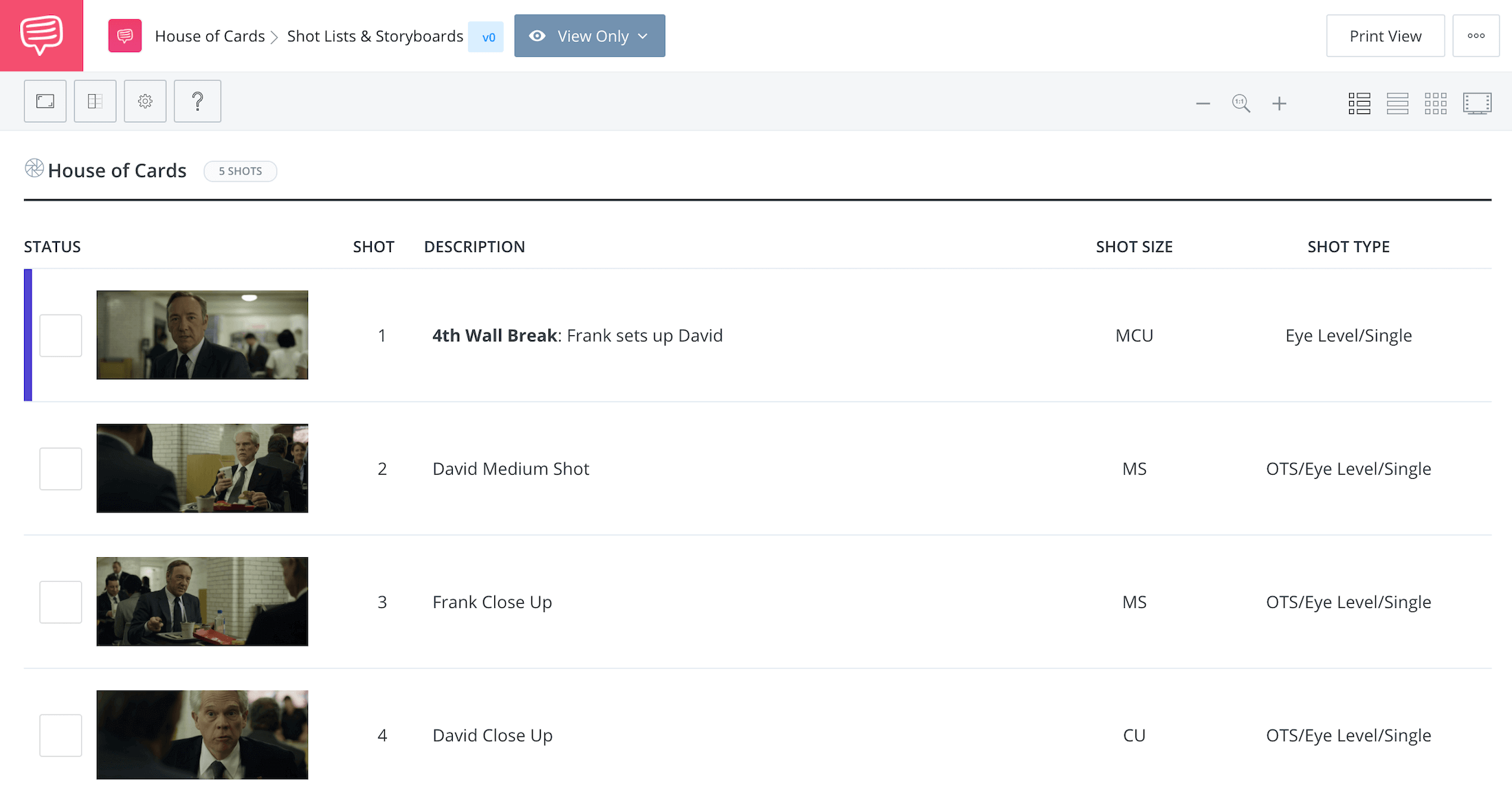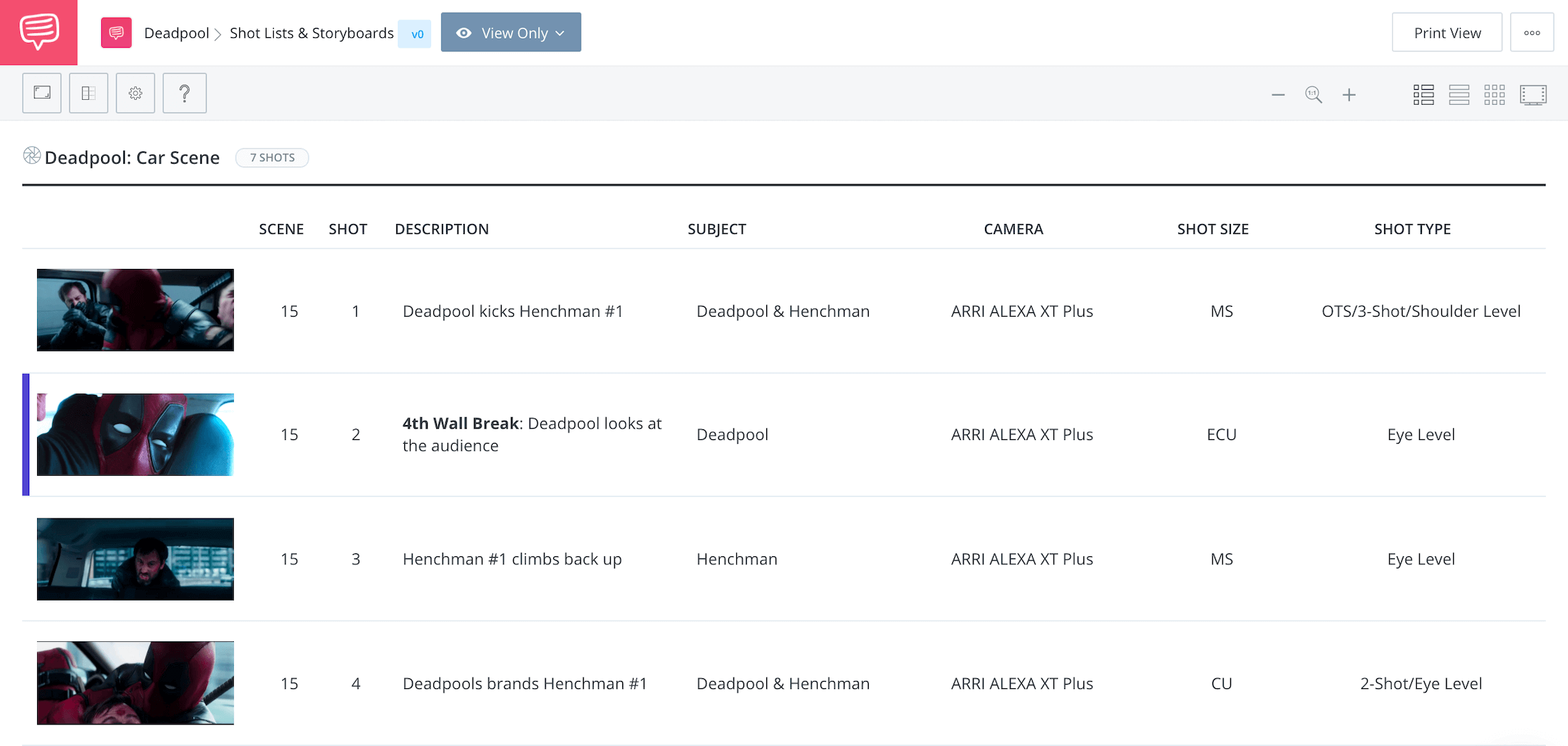We’ve all seen a film or TV show breaking the fourth wall. It’s hard to miss, and that’s why breaking the 4th wall is a really big filmmaking decision that can polarize your audience. Is your project right for this technique? If so, when should you do it? We’ve included plenty of breaking the fourth wall examples, and three tips to help you decide whether this cinematic technique is right for your project.
How to Break the 4th Wall [with Examples]
Origins of the 4th Wall
Breaking the fourth wall meaning
Everything you learn about filmmaking can be traced back to either classical visual art or the theatre. It makes perfect sense when you think about it, but if you ever have a question in the future about filmmaking, chances are that your answer is hidden there.
Before we jump into some examples, let's begin with a quick explanation of "the fourth wall."
FOURTH WALL DEFINITION
What is the fourth wall?
The fourth wall is an imaginary wall that separates the story from the real world. This term comes from the theatre, where the three surrounding walls enclose the stage while an invisible “4th wall” is left out for the sake of the viewer. The 4th wall is the screen we’re watching. We treat this wall like a one-way mirror. The audience can see and comprehend the story, but the story cannot comprehend the existence of the audience.
If you break that wall, you break that accord. This is called “Breaking The 4th Wall.” It can also be described as the story becoming aware of itself.
Tips for Breaking the Fourth Wall:
- Be extreme: This means you need to break the fourth wall all the time, or very rarely.
- Be thoughtful: Consider opportune scenes and moments within the scene for wall breaks.
- Be controversial: Don’t waste your big decision with an underwhelming 4th wall break.
BREAKING THE FOURTH WALL
Why break the fourth wall?
Breaking the fourth wall is a major filmmaking decision, and you have to approach it with some caution and careful consideration.
This is for good reason because if you do it wrong, you will destroy the suspension of disbelief and pull the viewer out of the story — not just for one scene, but for the entire piece.
If you do it right, you can connect with your audience and elevate your material. You can build trust, be funny, or take us into a character’s psyche. In other words, breaking the 4th wall can communicate vital information and evoke deeper emotions within the viewer.
In House of Cards, Frank Underwood brings us into his world of deception with direct address. It's a clever trick to allow Frank's otherwise despicable character to become utterly charming.
Frank Underwood breaking the fourth wall in House Of Cards
Frank is candid, funny, and psychotic. Notice that other characters don’t react when he breaks. It’s just us... and Frank. It’s private, intimate. A secret. We’re his confidante.
In doing so, we feel a deeper connection to Frank despite the questionable deeds he carries out from time to time.
To plan out your fourth wall breaks, it's important to properly call them out on a shot list or storyboard. That way you can visualize and communicate exactly how a scene will play out.
You can use StudioBinder's Shot List software to add descriptive copy and clearly label the fourth wall breaks. You can see in this example from House of Cards that we've bolded the description and color-coded both wall breaks in this scene. This helps remind your crew where and when these shots will be placed in the scene.
Related Posts
FOURTH WALL BREAKS
Are wall breaks right for your project?
Every project lands somewhere on the spectrum of realism vs. formalism. Breaking the 4th wall pushes your project further toward formalism. That’s because realism requires a slightly heavier willing suspension of disbelief. It may seem contradictory, but your project will actually lose some sense of realism when you break the fourth wall.
Ask yourself: How real do I want my project to be?
Having a charismatic actor like Ryan Reynolds helps the viewer enjoy the moments when Deadpool breaks the 4th wall. Consider this when holding casting auditions for your own project. Here is a compilation video of Deadpool breaking the fourth wall.
Deadpool breaking the 4th wall
Convincing people they are watching something real requires hypnosis, and when you break the fourth wall, you call attention to this hypnosis.
It shatters your trance over the viewer.
fourth wall breaks
How often should the wall be broken?
You want to be on extreme ends of the scale. If you are going to break the fourth wall do it all the time…or once in a blue moon.
Breaking the fourth wall in Airplane
You don’t want the audience to question your decision, or for them to think you were never really sure that wall breaks were the right idea for your story in the first place.
Breaking the fourth wall needs to come across as intentional. Premeditated. It either needs to be an inherent part of the film’s structure, or a little frill tacked on for fun. Anything “middle of the road” will fall into an unwelcome, and frustrating gray area.
THOUGHTFUL 4th WALL BREAKS
How can wall breaks benefit a scene?
When you read your script, you want to look for moments of high impact. These can be great moments to check-in with the viewer.
Ask yourself:
- Should I break the fourth wall before a scene to share key intel?
- Break it in the middle of a scene as a sort of joke, or aside?
- Break it at the very end of a scene to punctuate the moment?
If you can find a way to break the fourth wall that enhances your scene, you’ll have something special. Can do it without a word of dialogue?
Even better.
Watch this classic and perfectly-timed break, courtesy of Eddie Murphy in Trading Places. Not a word is spoken, but we understand everything about this moment from a single glance into the camera.
Silent fourth wall break in Trading Places
When you break the fourth wall, you creep into the secret mind of a character. Ever notice how many times it is used with psychopaths?
We move on to our last tip for breaking the fourth wall, but I want you to take a quick moment to consider your own favorite wall breaks.
HOW TO BREAK THE FOURTH WALL
Shot list your 4th wall breaks
As we mentioned above, to avoid any confusion and clearly communicate which specific shots will break the fourth wall, you'll need to shot list the scene. This is where you should call out the 4th wall breaks from other shots.
To illustrate this, we used StudioBinder's Shot Listing software to provide a way to easily color code specific shots.
To call out the wall breaks on a shot list, you'll want to color code those specific shots. That way they stand out from other shots that keep in the flow of the narrative.
When you create a shot, just assign a color that you can associate with 4th wall breaks. In this case, we chose purple.

Whatever the color, pick a vibrant color that will stand out on your shot list PDF (if you decide to print it out).
To take it one step further, start the description with something like "4th Wall Break" for added clarity. You can see the color-coded shot, which helps isolate it in the shot list. For extra clarity, the description for this shot is bolded and specific. After adding your 4th wall call outs, the shot list should look something like this:
At a glance, you can see that there are two wall breaks in this scene. When you share the shot list with your team, they'll know exactly which shots in a given scene will need to break the fourth wall.
Related Posts
CONTROVERSIAL FOURTH WALL BREAKS
Make your fourth wall breaks count
If you’re going to break the 4th wall, don’t be delicate. Be bold. Make a statement. Be controversial.
This is especially true if your film infrequently breaks the fourth wall. Controversial doesn’t mean you have to be crass or rude. It means you’re doing something big to get the viewer’s attention. Anyone can turn to the camera and make a pithy joke. Only true masters do this....
Classic fourth wall break from Blazing Saddles
Everyone notices when you break the fourth wall. You cross a line. If you’re going to do it, you need to make it count. Otherwise, why do it?
If you're ready to smash through that 4th wall in your next project, you might want a refresher on blocking and staging to help maximize the impact. This video is part of Filmmaking Techniques Masterclass:
Film Blocking • Watch the Entire Masterclass
For even more filmmaking techniques, we cover topics such as production design, camera movement, and film tone.
UP NEXT
How writer-directors use allusion
What happens when you don't want to completely break the wall but maybe just crack it a little? Allusion is a technique that can more gently bring the real world into the fictional world. Filmmakers can use allusion to get the best of both worlds — a quick nod to the audience without compromising their immersion. We'll explain how allusion works with examples like Logan, Blade Runner 2049, and Star Trek.
Up Next: Allusion explained →
Showcase your vision with elegant shot lists and storyboards.
Create robust and customizable shot lists. Upload images to make storyboards and slideshows.


